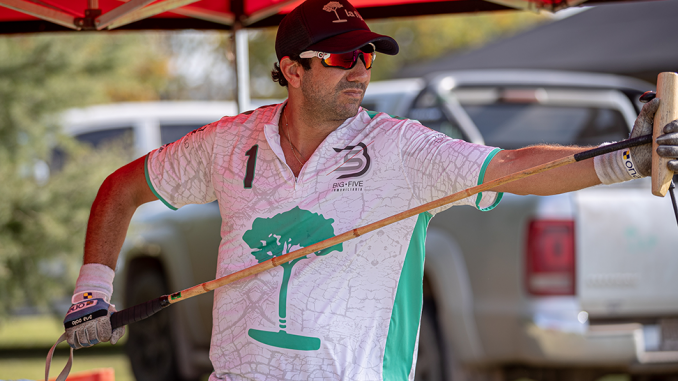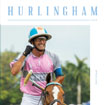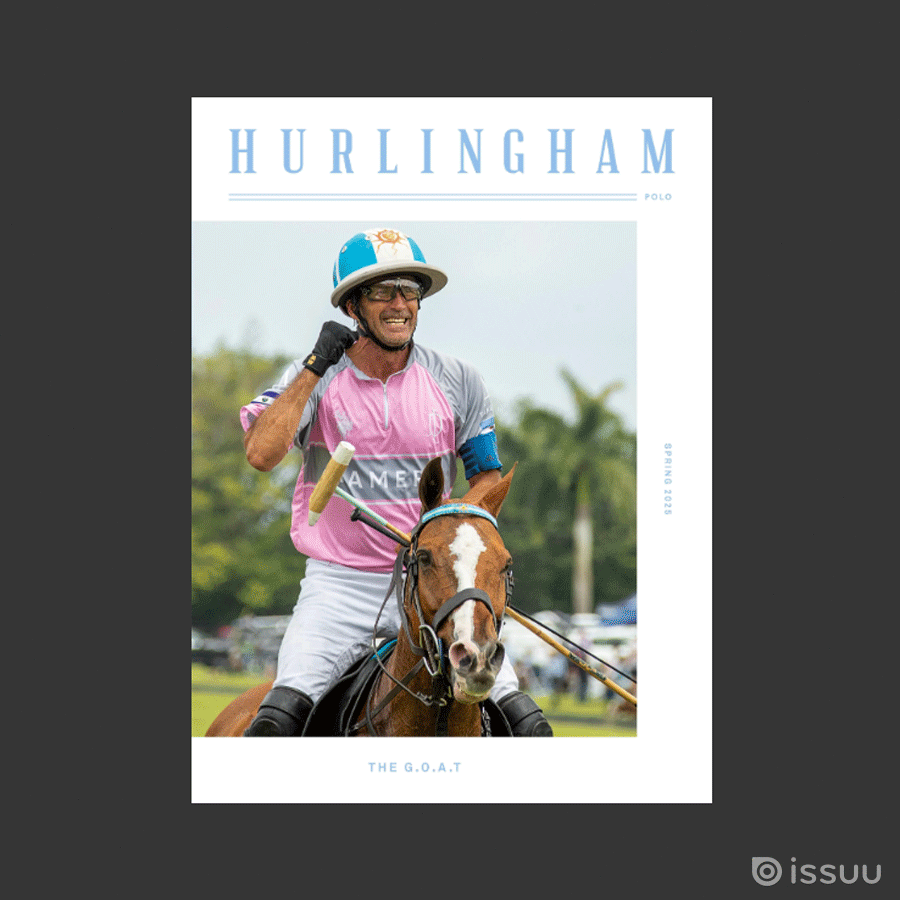
TOMORROW MARKS THE START OF A HISTORICAL FRENCH OPEN WITH 16 TEAMS AND 11 PLAYERS WHO PARTICIPATED IN THE LAST ARGENTINE OPEN
Thursday 1st of September, 2022
Considering the tournaments played at the same time there are in total:
43 TEAMS, 172 PLAYERS, MORE THAN 1000 HORSES AND 115 GAMES IN SEPTEMBER AT THE POLO CLUB DE CHANTILLY
Never before has France seen such a gathering of horses and polo players in three weeks. In Chantilly, in September, it is above all the Engel & Völkers French Open that is under the spotlight, bringing together 16 teams playing 48 games. A record for the most competitive tournament held in France with 11 of the 40 best players in the world. Parallel to that, three other tournaments will be held: the Trophée du Capitaine des Jeux (0-4 goals – 9 teams), the Trophée Castel (6-8 goals – 12 teams), where amateurs have “more room”, as well as the French Women’s Open (14-16 goals F – 6 teams with, among others, one of the three best players in the world, British Hazel Jackson).
Among the 16 teams of the Open, La Fija Sandbox will be in Chantilly for the first time. Meet the patron of this newcomer, Arthur Madrid, a Frenchman exiled in Argentina … who tells us everything about his virtual universe.
French expatriate in Buenos Aires, Arthur Madrid, co-founder with Sébastien Borget of the metaverse Sandbox, a platform valued at 4 billion euros, will be taking part in the Engel & Völkers French Open, his first “16 goal”. He will play with an extremely well-organised and ambitious team representing the colours of both his metaverse and his real club La Fija, based in Pilar. This is an opportunity to discover this new 3.0 patron and, for the uninitiated, to try understand this virtual universe a little better.
Can you briefly introduce Sandbox and explain “the metavers for dummies”?
Sandbox is a virtual world in which users can create their avatar and live immersive experiences in the metaverse. The idea of the metaverse is to be able to live experiences that are very similar to video games, but that allow you to create and live moments around fashion, music, architecture and gaming in a totally different and new way. The use of digital products has accustomed us to living 2D experiences, very accessible and sometimes too simple. The metaverse allows us to live these digital experiences in a more immersive way. Sandbox’s objective is to use 3.0 technologies and blockchains* to enable metaverse users to create and develop this world together and to generate new revenue streams by creating new metaverse professions. These could be architects to enable building another world, gardeners to sell trees and create new landscapes, performance artists to offer concerts, security guards to make these 3D experiences safe and dozens of other jobs.
If I understand correctly, this is a virtual world that would be perfect, where everyone writes, invents and lives their own lives and where you can even earn money, but how do you create wealth in a virtual environment?
The originality of Sandbox is to use blockchains to sell virtual land in limited numbers. Sandbox has been described as the new digital Manhattan: imagine Manhattan two hundred years ago and see Manhattan today… it is difficult to discern and predict what Sandbox will be like in 10 years’ time. The limitation of building space will increase its value in 5 to 10 years. Sandbox’s building tools are rendering tools** that allow us to create dozens of different experiences. Our goal is also to develop a cultural world with museums, artists like Snoop Dog, Jamiroquai, Warner Music Group, places like the Eiffel Tower, Jerusalem, Dubai, Hong Kong…
Isn’t the volatility of cryptocurrencies a danger in this new 3.0 world?
Sandbox is attached to a crypto-currency called Sand, the world’s No. 35 crypto-currency awarded in more than 30 exchanges around the world. The confidence that users seem to have in this crypto-currency is linked to its utility. The utility of evolving in the metaverse by buying land, objects and paying for the various trades I mentioned. The Sand’s exposure to the cryptocurrency market and its volatility is relative. Indeed, Bitcoin and Ether have been affected. It is easy to imagine that the rebound, the return to a more active economy in the next 12 to 18 months, will allow crypto-currencies to return. There is no doubt that they are linked to the economy. The volatility you talk about also affects traditional activity when you look at the euro/dollar tension, for example. The meta-verse is primarily aimed at this new audience, generation Z who have been accumulating NFT** and crypto for the last two-three years. A new generation that brands want to reach.
Will polo make its way into your metaverse? Can we all become virtual 10 goalers?
Funny question… There are a number of video games around sport today. They are certainly two very compatible worlds. It would obviously be possible with skill-based games, games linked to the ability of players to control skateboarding games, car racing games, etc. It would therefore be quite feasible to create a gameplay around polo. What is interesting in blockchain is the ability to progress and indeed, the handicap is also a level, so players could progress from a handicap 0 to a handicap 10. As far as horses are concerned, there are already a certain number of blockchain games such as Zed Run, which allows you to buy virtual horses that can be used for breeding and participate in virtual races.
Let’s talk about your polo, how did you discover this sport?
I was a show jumping rider since I was 5 years old, at L’Isle-Adam, then at L’Étrier in Paris. I took part in the French Youngsters Championships in 1992. I was familiar with the equestrian world. I arrived in Argentina 12 years ago and the first thing I did was to buy a show jumping horse. Actually, I discovered polo very late, only 4 years ago. I was fascinated by the level of the horses and the players in Argentina. I have been a rider for 35 years and a polo player for 4 years.
Is it because of polo that you live in Argentina or is it because you live in Buenos Aires that you discovered polo?
Argentine taxi drivers frequently ask me this question “¿qué haces acá Francés?”… Indeed, polo is one of the three main reasons why I live in Buenos Aires. The first is that my wife and children are Argentinean and I like the quality of life in this city. The second is that I have access to a very good talent pool in the IT sector.
How is your polo organisation in Argentina? Do you have your own facilities?
I am based in La Fija, in Pilar on route 28, where I have about ten horses.
Under what colours will you play in Chantilly?
In Chantilly I will be wearing the colours of Sandbox and La Fija. For a good development of polo, I believe more in an association between a patron and a club rather than in a patron creating his team name. La Fija is a horse training club, but it is also a club of friends and families with very few amateurs, 90% are professionals. Apart from Sascha Hauptmann and myself, there are only players with a handicap of 4 to 8.
Which horses will you be playing with in Chantilly?
I will send four of my horses and with the horses of our organisation, of Sascha and of Joaquin Maiquez, I will play eight or nine horses in Chantilly.
Why did you choose the Engel & Völkers French Open?
This tournament has the reputation of being very competitive. That is what I’m looking for above all: a SPORTS competition. It was an opportunity to reconnect with France. I just played in Villa Sesta and won a 10-goal in Rome. Chantilly was an opportunity make a grand entrance into a 16-goal tournament knowing that there are some very big players and very good teams.
What are your ambitions for this first appearance in the Open?
Until now I have only played 14-goal tournaments – I won one at Thai Polo – so this will be the first time I will play a 16-goal tournament and the first time I will play in Chantilly, so I will stay very humble. However, my team of three professionals is very competitive. That said, it all depends on motivation and circumstances.
Can you introduce us to your players? We know Agustin Garcia Grossi, who beat… La Fija in the final of the Camara last year with La Irenita, but what are the references of Juan-Manuel, his son and Simòn Prado, your handicap 5? Which horses will they have at their disposal?
First of all, Agustin Garcia Grossi is a very good player, very aggressive, very motivated. Secondly, the idea here was to create a real team made up of players who get along perfectly. My three players have been playing together for almost twenty years at the Trenque Lauquen club. Playing with a father and son guarantees an ideal understanding. Juan-Manuel’s reference is being his father’s son! Simòn Prado has been playing with them for a very long time and I feel they are very motivated, which is what I am looking for. They will play their horses which come from Argentina and are based in England where they play.
* Blockchain. A method of storing and transmitting data in the form of linked blocks that are protected against alteration.
** Rendering of an image, the process of creating an image from a model.
*** NFT: acronym for “non fungible token”. A thing is said to be fungible if it can “be replaced by things of the same kind, quality and quantity” (Larousse). Fungible assets include money. A one euro coin can be replaced by a one euro coin. Similarly, a Bitcoin can be exchanged with another Bitcoin. On the other hand, a so-called non-fungible asset cannot be replaced by another item of the same kind. It is unique and an NFT is unique. It can be a visual or musical piece of work, a film or a piece of writing, or the code of a computer element such as the famous first SMS in history digitised as an NFT and sold at auction. The source code of the World Wide Web has also been auctioned as NFT, as has the first page of Wikipedia.


